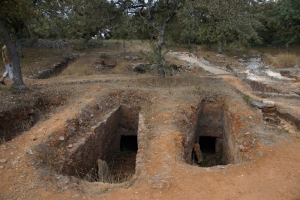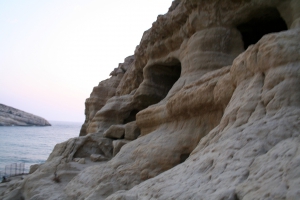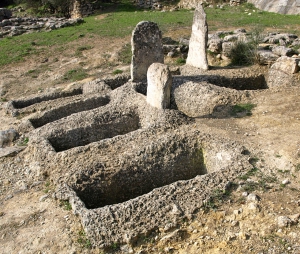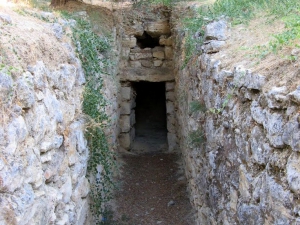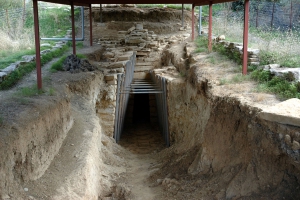The beautiful Gorge of Kato Zakros (or the gorge of the Dead) starts in a short distance from Ano Zakros, nearly 100km southeast of St. Nicholas, and ends at Kato Zakros. The beauty of the landscape, the historical importance of the gorge and its accessibility, attract many visitors every year.
Ancient Lappa was built near the current town of Argyroupolis, located 27km south of Rethymno. The area is now famous for its springs with waterfalls, its old mills and the lush green landscape that attracts thousands of visitors each year.
The necropolis of Armeni is situated 9km south of the town of Rethymnon, on the main road which leads to the south coast of Crete. The greatest Late Minoan III A-B (c. 1400-1200 BC) cemetery was discovered on a shallow hill called Prinokefalo, which means “hild of the wild oaks”.
Matala, ancient Matelon, was a port of Phaestus and Gortys and is well known for the carved caves, which were Grecoroman tombs. The cape south of Matala has been identified as the Cape Nysos and the location where the ships of Menelaus were wrecked (Odyssey).
The archaeological site of Fourni is located on the homonym wooded hill, 17km south of Heraklion and west of Kato Archanes. To get there (the site is not open, but you could contact the guard), you could walk along the Minoan path starting from Kato Arhanes or drive to the beautiful artificial grove of Fourni.
The Late Minoan vaulted tomb of Maleme is located very close to the German military cemetery and the historical airport of Maleme. The tomb was already been looted since the early 20th century and was badly damaged by a bomb during the Battle of Crete.
South of Aptera we meet the domed tomb of Stylos that came to light in 1961 (looted) by the archaeologists N. Platon, and K. Davaras. This monumental tomb was of a local lord and has a circular stone chamber and long, road corridor (20,80 m long).
Near the village Margarites we meet is a Late Minoan tomb of 1350 BC, which is considered one of the most important sites of the area. An aisle with carved stones leads to a circular domed tomb. Inside it, the bones of four adults and two children were found. From the findings, it seems that they came from higher social and religious level.















